Roger L. Freeman0471710458, 9780471710455
An Instructor’s Manual presenting detailed solutions to all the problems in the book is available from the Wiley editorial department.
Table of contents :
Cover……Page 1
Fundamentals of Telecommunications……Page 4
CONTENTS……Page 10
Preface……Page 26
1.2 Telecommunication Will Touch Everybody……Page 28
1.3.1 End-Users, Nodes, and Connectivities……Page 29
1.3.2 Telephone Numbering and Routing……Page 32
1.3.4 Introduction to the Busy Hour and Grade of Service……Page 34
1.3.6 One-Way and Two-Way Circuits……Page 36
1.3.7 Network Topologies……Page 37
1.3.8 Variations in Traffic Flow……Page 40
1.4 Quality of Service……Page 41
1.5 Standardization in Telecommunications……Page 42
1.6.1 Points of Presence……Page 43
Review Exercises……Page 44
References……Page 45
2.2 Signals in Everyday Life……Page 46
2.3.1 Early Sources of Electrical Current……Page 47
2.3.2 The Electrical Telegraph: An Early Form of Long-Distance Communications……Page 48
2.3.3 What Is Frequency?……Page 50
2.4.2 Modulation……Page 55
2.4.3 Binary Digital Signals……Page 56
2.5.1 Wire Pair……Page 58
2.5.2 Coaxial Cable Transmission……Page 61
2.5.3 Fiber-Optic Cable……Page 62
2.5.4 Radio Transmission……Page 63
References……Page 65
3.2.1 Signal-to-Noise Ratio……Page 68
3.2.2 Voice Transmission……Page 69
3.2.3 Data Circuits……Page 71
3.3 The Three Basic Impairments and How They Affect the End-User……Page 72
3.3.2 Phase Distortion……Page 73
3.3.3 Noise……Page 75
3.4.1 Typical Levels……Page 78
Review Exercises……Page 79
References……Page 80
4.2.1 Traffic Studies……Page 82
4.2.2 Discussion of the Erlang and Poisson Traffic Formulas……Page 88
4.2.4 Dimensioning and Efficiency……Page 90
4.2.5 Quantifying Data Traffic……Page 93
4.3.1 Basic Switching Requirements……Page 94
4.3.3 The Essential Functions of a Local Switch……Page 95
4.3.4 Introductory Switching Concepts……Page 97
4.3.5 Early Automatic Switching Systems……Page 98
4.3.7 Stored Program Control……Page 100
4.3.8 Concentrators and Remote Switching……Page 101
4.4.2 Two-Wire and Four-Wire Transmission……Page 102
4.5.1 Definition……Page 105
4.5.2 Frequency Division Multiplex……Page 106
4.5.3 Pilot Tones……Page 111
Review Exercises……Page 112
References……Page 114
5.1 Chapter Objective……Page 116
5.2.1 The Human Voice……Page 117
5.3 Operation of the Telephone Subset……Page 118
5.4.1 Basic Design Considerations……Page 120
5.4.2 Subscriber Loop Length Limits……Page 121
5.4.3 Designing a Subscriber Loop……Page 122
5.4.4 Extending the Subscriber Loop……Page 124
5.4.5 “Cookbook” Design Methods for Subscriber Loops……Page 125
5.4.6 Present North American Loop Design Rules……Page 128
5.5.2 Inductive Loading of Wire-Pair Trunks (Junctions)……Page 129
5.6 VF Repeaters (Amplifiers)……Page 130
Review Exercises……Page 131
References……Page 132
6.1 Introduction to Digital Transmission……Page 134
6.2.1 Sampling……Page 135
6.2.2 Quantization……Page 136
6.2.3 Coding……Page 140
6.3 PCM System Operation……Page 145
6.4 Line Code……Page 146
6.5 Signal-to-Gaussian-Noise Ratio on PCM Repeatered Lines……Page 147
6.6 Regenerative Repeaters……Page 148
6.8.2 Stuffing and Justification……Page 149
6.8.3 North American Higher-Level Multiplex……Page 150
6.8.4 European E1 Digital Hierarchy……Page 151
6.9.1 Transmission Limitations……Page 153
6.9.4 Thermal Noise……Page 154
6.11.1 Advantages and Issues of Digital Switching……Page 155
6.11.2 Approaches to PCM Switching……Page 156
6.11.3 Review of Some Digital Switching Concepts……Page 162
6.12.2 Technical Requirements of the Digital Network……Page 164
6.12.3 Digital Network Performance Requirements……Page 169
Review Exercises……Page 172
References……Page 173
7.2.1 Supervisory Signaling……Page 176
7.3.1 Conveying Signaling Information……Page 177
7.3.2 Evolution of Signaling……Page 178
7.4 Compelled Signaling……Page 185
7.5 Concepts of Link-by-Link Versus End-to-End Signaling……Page 187
7.6 Effects of Numbering on Signaling……Page 188
7.7 Associated and Disassociated Channel Signaling……Page 189
7.8.1 Background and Purpose……Page 191
7.9.2 Reverse-Battery Signaling……Page 192
Review Exercises……Page 193
References……Page 194
8.2.1 The Evolving Local Network……Page 196
8.2.2 What Affects Local Network Design?……Page 197
8.3.2 Three Design Steps……Page 200
8.3.3 Link Limitation……Page 201
8.3.6 Hierarchy……Page 202
8.3.7 Network Design Procedures……Page 203
8.4.1 New Routing Techniques……Page 207
8.4.2 Logic of Routing……Page 208
8.4.4 Applications……Page 210
8.5.2 Echo……Page 214
8.5.4 Causes of Echo and Singing……Page 215
8.5.5 Transmission Design to Control Echo and Singing……Page 217
8.5.6 Introduction to Transmission-Loss Engineering……Page 218
Review Exercises……Page 220
References……Page 221
9.1 Objective……Page 222
9.2.2 Introduction to Radio Transmission……Page 223
9.2.3 Line-of-Sight Microwave……Page 224
9.2.4 Fades, Fading, and Fade Margins……Page 239
9.2.5 Diversity and Hot-Standby……Page 242
9.2.6 Frequency Planning and Frequency Assignment……Page 243
9.3.3 Three Basic Technical Problems……Page 244
9.3.4 Frequency Bands: Desirable and Available……Page 246
9.3.5 Multiple Access to a Communication Satellite……Page 247
9.3.6 Earth Station Link Engineering……Page 250
9.3.7 Digital Communication by Satellite……Page 255
9.3.8 Very-Small-Aperture Terminal (VSAT) Networks……Page 256
9.4.1 Applications……Page 258
9.4.2 Introduction to Optical Fiber as a Transmission Medium……Page 259
9.4.4 Splices and Connectors……Page 261
9.4.5 Light Sources……Page 263
9.4.6 Light Detectors……Page 264
9.4.7 Optical Fiber Amplifiers……Page 266
9.4.8 Wavelength Division Multiplexing……Page 267
9.4.9 Fiber-Optic Link Design……Page 268
9.5.2 Description……Page 271
9.5.3 Cable Characteristics……Page 272
9.6 Transmission Media Summary……Page 273
Review Exercises……Page 274
References……Page 275
10.2 The Bit-A Review……Page 278
10.4 Coding……Page 279
10.5.1 Introduction……Page 281
10.5.3 Error Detection and Error Correction……Page 282
10.6.2 Neutral and Polar dc Transmission Systems……Page 285
10.7.1 Introduction……Page 286
10.7.2 Asynchronous and Synchronous Transmission……Page 287
10.7.3 Timing……Page 289
10.7.4 Bits, Bauds, and Symbols……Page 290
10.7.5 Digital Data Waveforms……Page 291
10.8 Data Interface: The Physical Layer……Page 292
10.9.2 Modulation-Demodulation Schemes……Page 294
10.9.3 Critical Impairments to the Transmission of Data……Page 295
10.9.5 Modem Selection Considerations……Page 299
10.9.6 Equalization……Page 303
10.9.7 Data Transmission on the Digital Network……Page 304
10.10 What Are Data Protocols?……Page 305
10.10.1 Basic Protocol Functions……Page 306
10.10.2 Open Systems Interconnection (OSI)……Page 307
10.10.3 High-Level Data-Link Control: A Typical Link-Layer Protocol……Page 311
Review Exercises……Page 314
References……Page 316
11.2 Local Area Networks (LANs)……Page 318
11.3 LAN Topologies……Page 319
11.4 Baseband LAN Transmission Considerations……Page 321
11.5.2 How LAN Protocols Relate to OSI……Page 322
11.5.3 Logical Link Control (LLC)……Page 324
11.6.1 Introduction……Page 325
11.6.2 CSMA and CSMA/CD Access Techniques……Page 327
11.6.3 Token Ring and FDDI……Page 333
11.7.1 Repeaters……Page 335
11.7.2 LAN Bridges……Page 336
11.7.3 Routers……Page 337
11.7.4 Hubs and Switching Hubs……Page 338
References……Page 339
12.1.1 Introductory Comments……Page 342
12.2 The Concept of Packet Data Communications……Page 345
12.3.1 Background and Scope……Page 346
12.3.2 TCP/IP and Data-Link Layers……Page 347
12.3.3 IP Routing Algorithm……Page 349
12.3.4 The Transmission Control Protocol (TCP)……Page 351
12.4.2 The Future of ISDN……Page 354
12.5.1 Rationale and Background……Page 355
12.5.2 The Genesis of Frame Relay……Page 356
12.5.3 Introduction to Frame Relay Operation……Page 357
12.5.4 Frame Structure……Page 358
12.5.5 Traffic and Billing on a Frame Relay Network……Page 360
12.5.6 Congestion Control: A Discussion……Page 361
12.5.7 Quality of Service Parameters……Page 363
Review Exercises……Page 364
References……Page 365
13.3 Fiber-Optic Ring Network……Page 368
13.4 IEEE 802.11 System……Page 369
13.5.1 Differences Between 802.11 and 802.15……Page 371
13.6.1 IEEE 802.16 MAC Requirements……Page 375
Review Exercises……Page 386
References……Page 387
14.1 Introduction……Page 388
14.2 Overview of SS No. 7 Architecture……Page 389
14.3 SS No. 7 Relationship to OSI……Page 390
14.4 Signaling System Structure……Page 391
14.4.1 Signaling Network Management……Page 393
14.5 The Signaling Data Link Layer (Layer 1)……Page 394
14.6.1 Signal Unit Delimitation and Alignment……Page 395
14.6.3 Error Correction……Page 396
14.6.5 Basic Signal Unit Format……Page 397
14.7.2 Signaling Message-Handling Functions……Page 399
14.8.2 International and National Signaling Networks……Page 401
14.9.1 Basic Performance Parameters……Page 402
14.9.4 Signaling Link Delays over Terrestrial and Satellite Links……Page 403
14.10 Numbering Plan for International Signaling Point Codes……Page 404
14.11.2 Services Provided by the SCCP……Page 405
14.11.4 Connection-Oriented Functions: Temporary Signaling Connections……Page 406
14.11.5 Structure of the SCCP……Page 407
14.12.1 Introduction……Page 408
14.12.2 Telephone User Part (TUP)……Page 409
Review Exercises……Page 411
References……Page 412
15.2 Data Transmission Versus Conventional Digital Telephony……Page 414
15.3 Drawbacks and Challenges for Transmitting Voice on Data Packets……Page 415
15.4 VoIP, Introductory Technical Description……Page 416
15.4.1 VoIP Gateway……Page 417
15.4.3 The Delay Tradeoff……Page 419
15.4.4 Lost Packet Rate……Page 421
15.5 Media Gateway Controller and Its Protocols……Page 422
15.5.1 Overview of the ITU-T Rec. H.323 Standard……Page 423
15.5.3 Media Gateway Control Protocol (MGCP)……Page 424
15.5.4 Megaco or ITU-T Rec. H.248 (Ref. 13)……Page 425
Review Exercises……Page 427
References……Page 428
16.1 Background and Objectives……Page 430
16.2 An Appreciation of Video Transmission……Page 431
16.2.1 Additional Definitions……Page 433
16.3 The Composite Signal……Page 434
16.4.3 Other Parameters……Page 436
16.5.1 Color Transmission……Page 438
16.6 Methods of Program Channel Transmission……Page 440
16.7.3 Differential Gain……Page 441
16.7.5 Signal-to-Noise Ratio (10 kHz to 5 MHz)……Page 442
16.8 TV Transmission by Satellite Relay……Page 443
16.9.2 Basic Digital Television……Page 444
16.9.3 Bit Rate Reduction-Compression Techniques……Page 445
16.9.4 An Overview of the MPEG-2 Compression Technique……Page 447
16.10.2 The pX64 kbps Codec……Page 450
16.11.1 Basic Principle……Page 454
Review Exercises……Page 455
References……Page 456
17.1 Objective and Scope……Page 458
17.2.1 The Beginnings……Page 459
17.2.2 Early System Layouts……Page 460
17.3.2 dBmV and Its Applications……Page 461
17.3.3 Thermal Noise in CATV Systems……Page 462
17.3.4 Signal-to-Noise Ratio (S/N) Versus Carrier-to-Noise Ratio (C/N) in CATV Systems……Page 463
17.3.5 The Problem of Cross-Modulation (Xm)……Page 465
17.3.7 The Underlying Coaxial Cable System……Page 466
17.3.8 Taps……Page 467
17.4.1 Design of the Fiber-Optic Portion of an HFC System……Page 468
17.5.2 Transmission of Uncompressed Video on CATV Trunks……Page 474
17.6.1 Introduction……Page 475
17.7.1 General……Page 478
17.7.2 Layer 1-Physical Layer……Page 479
17.7.3 Layer 2-Data-Link Layer……Page 480
Review Exercises……Page 481
References……Page 482
18.1.1 Background……Page 484
18.2 Basic Concepts of Cellular Radio……Page 485
18.3.1 The Propagation Problem……Page 489
18.3.2 Propagation Models……Page 490
18.4.1 Introduction……Page 491
18.4.2 Diversity: A Technique to Mitigate the Effects of Fading and Dispersion……Page 492
18.4.3 Cellular Radio Path Calculations……Page 494
18.6.1 Introduction……Page 495
18.6.3 Time Division Multiple Access (TDMA)……Page 496
18.6.4 Code Division Multiple Access (CDMA)……Page 499
18.7 Frequency Reuse……Page 503
18.8.2 Narrowband Microcell Propagation at PCS Distances……Page 505
18.9.3 European Cordless Telephones……Page 508
18.10 Wireless LANs……Page 510
18.11.2 Advantages and Disadvantages of LEO Systems……Page 511
Review Exercises……Page 512
References……Page 513
19.1 Objective and Scope……Page 516
19.2.2 Synchronous Signal Structure……Page 517
19.2.3 Add-Drop Multiplexer……Page 526
19.3.2 SDH Standard Bit Rates……Page 528
19.3.3 Interface and Frame Structure of SDH……Page 529
Review Exercises……Page 535
References……Page 536
20.1 Evolving Toward ATM……Page 538
20.2 Introduction to ATM……Page 539
20.3 User-Network Interface (UNI) and Architecture……Page 541
20.4.1 ATM Cell Structure……Page 543
20.5 Cell Delineation and Scrambling……Page 547
20.6.1 Physical Layer……Page 548
20.6.2 The ATM Layer……Page 549
20.6.3 The ATM Adaptation Layer (AAL)……Page 550
20.7 Services: Connection-Oriented and Connectionless……Page 553
20.7.1 Functional Architecture……Page 554
20.8.2 The Virtual Path Level……Page 555
20.9.2 Signaling Virtual Channels……Page 557
20.10.2 Selected QoS Parameter Descriptions……Page 558
20.11 Traffic Control and Congestion Control……Page 559
20.12.1 In the DS3 Frame……Page 560
20.12.3 E1 Mapping……Page 561
20.12.4 Mapping ATM Cells into SDH……Page 563
Review Exercises……Page 564
References……Page 565
21.2 The Bigger Picture……Page 566
21.3.3 Performance Management……Page 567
21.4 Survivability-Where Network Management Really Pays……Page 568
21.4.1 Survivability Enhancement-Rapid Troubleshooting……Page 569
21.5.1 Aids in Network Management Provisioning……Page 571
21.5.2 Communication Channels for the Network Management System……Page 574
21.6.2 Network Traffic Management Center……Page 575
21.6.3 Network Traffic Management Principles……Page 576
21.6.4 Network Traffic Management Functions……Page 577
21.6.5 Network Traffic Management Controls……Page 578
21.7.1 What Are Network Management Systems?……Page 580
21.7.2 An Introduction to Network Management Protocols……Page 581
21.7.3 Remote Monitoring (RMON)……Page 585
21.7.4 SNMP Version 2……Page 586
21.7.5 SNMP Version 3 (SNMPv.3)……Page 587
21.7.6 Common Management Information Protocol (CMIP)……Page 589
21.8 Telecommunication Management Network (TMN)……Page 591
21.9.1 Function Blocks……Page 592
21.9.3 TMN Reference Points……Page 594
21.10 Network Management in ATM……Page 595
21.10.1 Interim Local Management Interface (ILMI) Functions……Page 596
21.10.2 ILMI Service Interface……Page 597
Review Exercises……Page 598
References……Page 600
A.2 What Is Electricity?……Page 602
A.2.1 Electromotive Force (EMF) and Voltage……Page 603
A.3 Ohm’s Law……Page 604
A.3.1 Voltages and Resistances in a Closed Electric Circuit……Page 605
A.3.2 Resistance of Conductors……Page 606
A.4.1 Kirchhoff’s First Law……Page 607
A.4.2 Kirchhoff’s Second Law……Page 609
A.4.3 Hints on Solving dc Network Problems……Page 610
A.5 Electric Power in dc Circuits……Page 611
A.6.1 Magnetism and Magnetic Fields……Page 612
A.6.2 Electromagnetism……Page 613
A.7.1 What Happens When We Close a Switch on an Inductive Circuit?……Page 614
A.7.2 RC Circuits and the Time Constant……Page 619
A.8 Alternating Currents……Page 620
A.8.1 Calculating Power in ac Circuits……Page 623
A.8.2 Ohm’s Law Applied to ac Circuits……Page 624
A.8.3 Calculating Impedance……Page 627
A.10 Resonance [Refs. 1 and 4]……Page 628
References……Page 629
B.2.1 Symbols and Notation……Page 630
B.2.3 Using the Sigma Notation……Page 631
B.3.2 Conventions with Factors and Parentheses……Page 632
B.3.3 Simple Linear Algebraic Equations……Page 634
B.3.4 Quadratic Equations……Page 636
B.3.5 Solving Two Simultaneous Linear Equations with Two Unknowns……Page 637
B.4.2 Laws of Logarithms……Page 639
C.1 Learning Decibel Basics……Page 642
C.2 dBm and dBW……Page 646
C.4 Using Decibels with Signal Currents and Voltages……Page 648
C.5 Calculating a Numeric Value Given a dB Value……Page 650
C.5.1 Calculating Watt and Milliwatt Values When Given dBW and dBm Values……Page 651
C.7 dB Applied to the Voice Channel……Page 652
C.8 Insertion Loss and Insertion Gain……Page 657
C.9 Return Loss……Page 658
C.10.2 Definition of Transmission Reference Point……Page 659
C.12 EIRP……Page 662
References……Page 663
Appendix D Acronyms and Abbreviations……Page 664
Index……Page 676
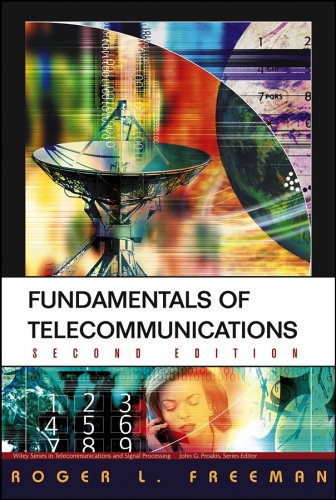
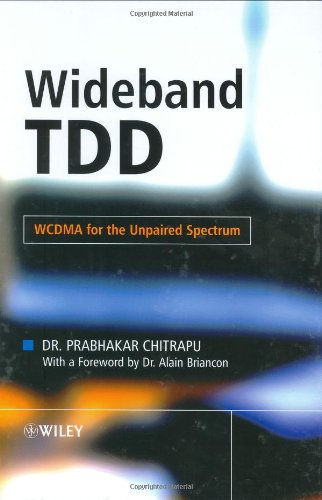
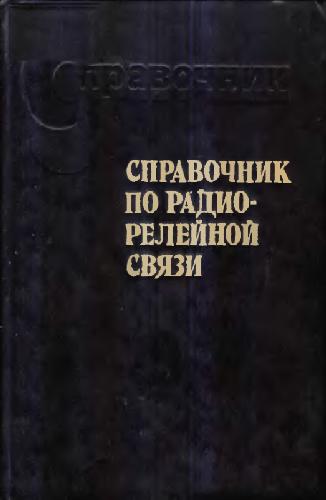


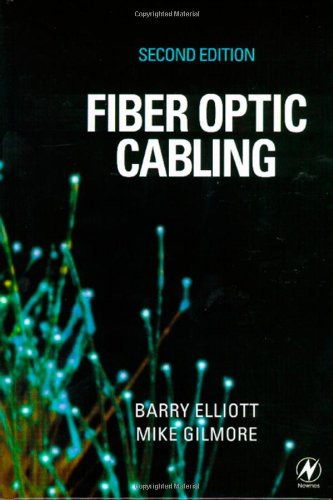
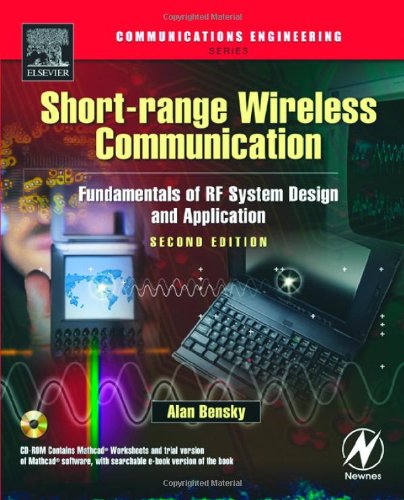
Reviews
There are no reviews yet.